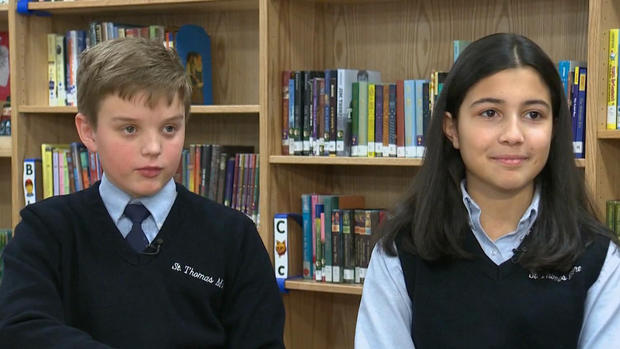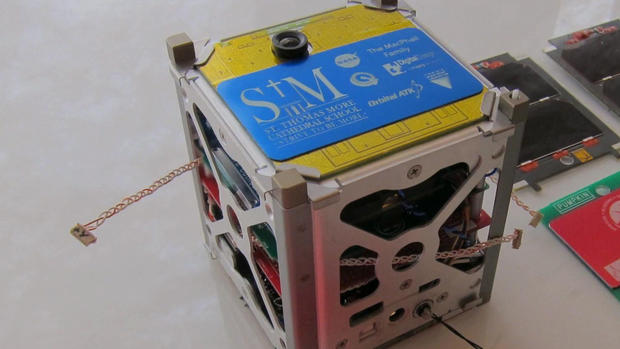Satellite built by Virginia students to be deployed in space
Walk past the fiction aisles inside the library at St. Thomas More Cathedral School, and you'll find real-life drama inside "mission control."
The students at the Arlington, Virginia, school have a satellite in space -- and they built it themselves, reports CBS News' Mark Albert.
Eleven-year-old Gabriel MacPhail and 13-year-old Rebecca El Choueiry took on this galactic school assignment with gusto.
"My thoughts were, 'Wow, this is a big deal and can we really do this?'" MacPhail said.
"I was like, 'OK, we can do this. We can do this.' 'Cus once you've started, there's no going back," El Choueiry said.
It all started nearly four years ago when Felix Pellegrino's dad, Joe, heard about a NASA competition to build small, cube-shaped satellites called "CubeSats." Pellegrino happens to be a NASA engineer.
"We were beyond thrilled that NASA chose our small Catholic school as a mission to launch a CubeSat," Pellegrino said.
With his guidance, the students designed and tested a small space camera and put it inside the CubeSats frame.
"We taught students how to do computerated design, we taught them about design philosophy," Pellegrino said. "The students helped us with a vibration test. We did a high altitude test in the parking lot of the school."
"I wasn't sure if we, a grade school, a bunch of really young kids, could actually put a satellite in space," MacPhail said. "But we have!"
Building a satellite -- even a small one -- doesn't come cheap. It cost about $50,000, and the school and students had to raise every penny.
The four-inch-squared school project launched on a rocket in December with five other CubeSats and is now aboard the International Space Station.
Astronauts are set to deploy the CubeSat as soon as Tuesday morning.
The moment of truth, Pellegrino said, is when the students, including his fifth-grade son Felix, find out if the camera actually works. The tiny camera is designed to snap and send an image back to Earth every 30 seconds until its battery dies in about a year.
The students will intercept the photos using a ham radio and software that converts radio beeps into images. It's the same technology used by the Apollo 11 astronauts when they beamed back those stunning photos from the moon a half-century ago, pixel by pixel.
"We are the first grade school in the world to build a CubeSat," Pellegrino said.
But for Pellegrino, the achievement and any space imagery from it are not the true measure of success. He's on a recruiting mission, he said.
"We need American engineers and scientists. So that really is the mission goal," Pellegrino said. "Now if the satellite works and takes pictures, that's wonderful. That's icing on the cake. But for me, personally, I felt that we have met 90 percent of the mission objective with all of the education and inspiration we've provided the students over the last four years."
So far, it appears to be mission accomplished.
"What is the lesson you've learned after doubting yourself and being able to do it?" Albert asked MacPhail.
"To always believe in yourself," he responded. "That you just can't just give up on something this big."


